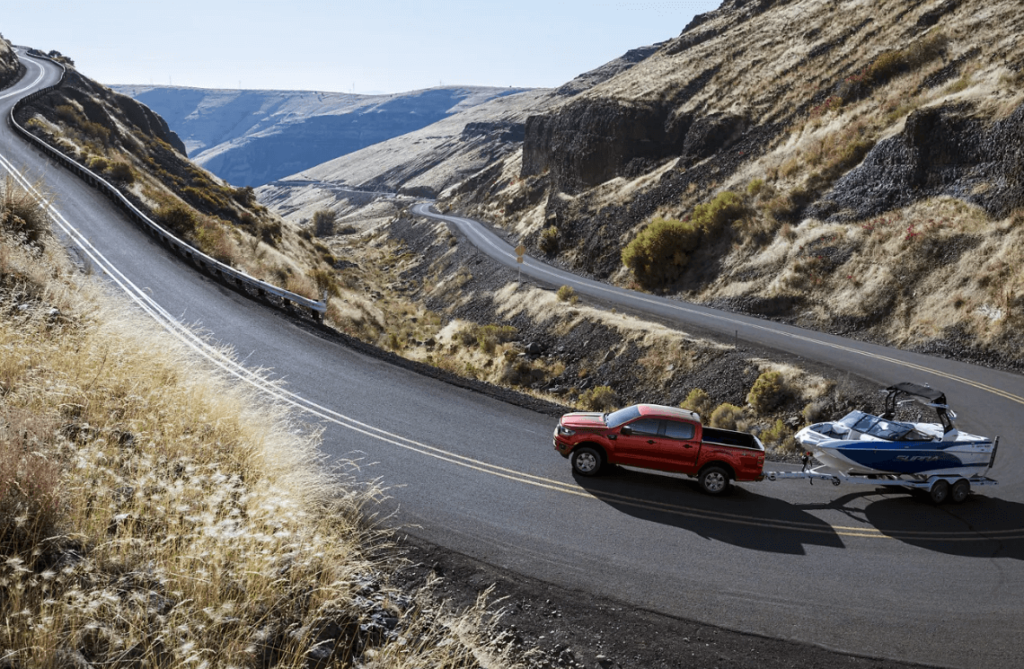When it comes to trucks, the 2000 Ford Ranger has long held a place in the hearts of enthusiasts and practical users alike. Known for its compact size, agility, and capability, this mid-sized pickup has proven itself as a versatile vehicle worthy of both everyday tasks and adventurous excursions. Particularly significant is its towing capacity—an essential factor for those considering the Ranger for hauling trailers, boats, or other recreational vehicles. In this guide, we dive deep into the Ranger’s towing capabilities while exploring various factors that influence its performance.
Understanding Towing Capacity
Towing capacity refers to the maximum weight your vehicle can safely haul behind it. For the 2000 Ford Ranger, this figure can vary depending on several factors, including the engine type, axle ratio, and the configuration of the truck itself. The Ranger was offered with different engine options, primarily a 2.5L four-cylinder and a more powerful 4.0L V6 engine during this model year. These different configurations lead to a variation in towing capacity.
The 2.5L engine, while competent for light loads, has a lower towing capacity, often mapped around 3,000 pounds. Conversely, the 4.0L V6 engine significantly boosts the Ranger’s ability, pushing its capacity to approximately 5,000 pounds when properly equipped. This flexibility in options makes the Ranger a tailored choice for varying towing needs.
Engine Configurations and Towing Capacity
The choice of engine has a profound impact on towing performance. The 2.5L inline-four is an economical choice that excels in fuel efficiency, making it ideal for city driving and light-duty applications. However, if your intentions lean towards serious towing, the 4.0L V6 can provide a robust option. This engine generates a healthy 207 horsepower and 238 lb-ft of torque, which translates into better performance under load.
Moreover, the Ranger’s rear axle ratio also plays a crucial role in towing dynamics. Models equipped with a 3.55:1 axle ratio are generally more robust for towing tasks, allowing for improved power delivery and acceleration when hauling significant weight. An understanding of your specific model’s axle ratio can inform whether it meets your towing requirements.
Towing Equipment and Features
In addition to engine specs, the Ford Ranger of 2000 came with various towing equipment that enhances its capability. Optional towing packages often include features such as heavier-duty springs, a robust hitch, and wiring harnesses tailored for trailers. These enhancements contribute to a vehicle that can achieve optimal towing performance while ensuring safety.
Utilizing the right gear, including a properly rated trailer hitch and, if necessary, additional aids like a brake controller, is paramount for a successful towing experience. These components ensure that regardless of load, your driving experience remains stable and controlled.
Payload Capacity: An Important Aspect
While towing capacity is an integral facet, it is equally important to consider the payload capacity of the 2000 Ford Ranger. Payload refers to the maximum weight the vehicle can carry in its bed and within the cabin. For the Ranger, the payload capacity generally hovers around 1,500 pounds. This figure can vary based on the chosen configuration and options. It is crucial to remember that exceeding either towing or payload limits can pose significant risks, including handling issues and braking inefficiency.
Factors Influencing Towing Performance
Several conditions can affect a vehicle’s performance while towing. For instance, the terrain plays a pivotal role—hills and rough landscapes demand more from your vehicle, thus affecting how effectively it can move heavy loads. Weather conditions also factor in; wet or icy roads can compel a driver to exercise greater caution to ensure stability. Therefore, an understanding of your route and the potential challenges that may arise during towing is essential.
Additionally, maintaining your Ranger is critical for optimal towing performance. Regular checks on the engine, brakes, and transmission fluid can prevent complications. Ensuring that the tires are adequately inflated and in good condition is equally important. These simple maintenance practices can enhance safety and efficiency while hauling loads.
Best Practices for Towing with the 2000 Ford Ranger
1. Know Your Limits: Familiarize yourself with the specifications of your Ranger, including its towing and payload capacities. Understanding these limits will help you make informed decisions about what to tow.
2. Secure Your Load: Always ensure that your load is evenly distributed and securely strapped down. This practice reduces the risk of swaying or instability on the road.
3. Use Tow Mirrors: If your trailer extends beyond the width of your vehicle, consider using tow mirrors for better visibility.
4. Practice Braking: Towing requires longer stopping distances and increased braking time. Getting accustomed to these factors before hitting the highway can spare you undesirable surprises.
Conclusion
The 2000 Ford Ranger stands as a companion for those with active lifestyles, offering the capability to tackle various towing tasks efficiently. Whether you’re embarking on a weekend getaway with a trailer or hauling equipment for work, understanding the Ranger’s towing capacity and adhering to safe towing practices can make all the difference. Grasp the nuances of your specific configuration, equip your truck appropriately, and you’ll discover that the 2000 Ford Ranger is not just a truck—it’s a reliable ally on all your adventures.
